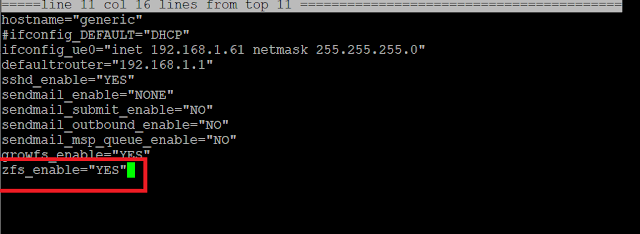實驗在Raspberry pi 3 B+上安裝FreeBSD作業系統,啟用ZFS檔案系統,比較ZFS dataset有使用壓縮(Compression)與副本(copies)屬性使用磁碟空間比較。另外建立一個ZFS Volume(Block device)作為iSCSI Target使用。以Windows系統連線iSCSI Target並格式化為NTFS。測試ZFS snapshot, rollback 等功能。
一、下載Raspberry Pi的FreeBSD OS Image:
從FreeBSD官網下載作業系統映像檔,如下圖所示:
下載檔案:FreeBSD-13.0-RELEASE-arm64-aarch64-RPI.img.xz
二、使用Raspberry Pi Imager安裝作業系統到SD Card上:
- 從https://www.raspberrypi.com/software/下載Raspberry Pi Imager:
三、設定FreeBSD Static IP, nameserver, 與sshd允許遠端連線:
- static IP: 查看網路面卡名稱(ue0),編輯/etc/rc.conf加入
ipconfig_ue0="inet x.x.x.x netmask x.x.x.x"
defaultrouter="x.x.x.x"
四、把外接USB硬碟加入ZFS pool:
啟用ZFS服務:- 編輯/etc/rc.conf加入zfs_enable="YES"
五、比較zfs dataset具有compression與copies屬性儲存空間的差異
- 分別建立storage/normal, storage/compress與storage/data三個filesystem,
- 建立zfs volume(block device)作為iSCSI Target設備 zfs create -V 25G storage/iscsi01
- 編輯/etc/ctl.conf
更改etc.conf權限,chmod 644 /etc/ctl.conf
編輯/etc/rc.conf加入ctld_enable="YES"
啟用service ctld start - 啟用Windows iSCSI Initiator 連線iSCSI Target
- 使用Windoes disk managment格式化iSCSI 硬碟
七、zfs snapshot與rollback展示:























沒有留言:
張貼留言